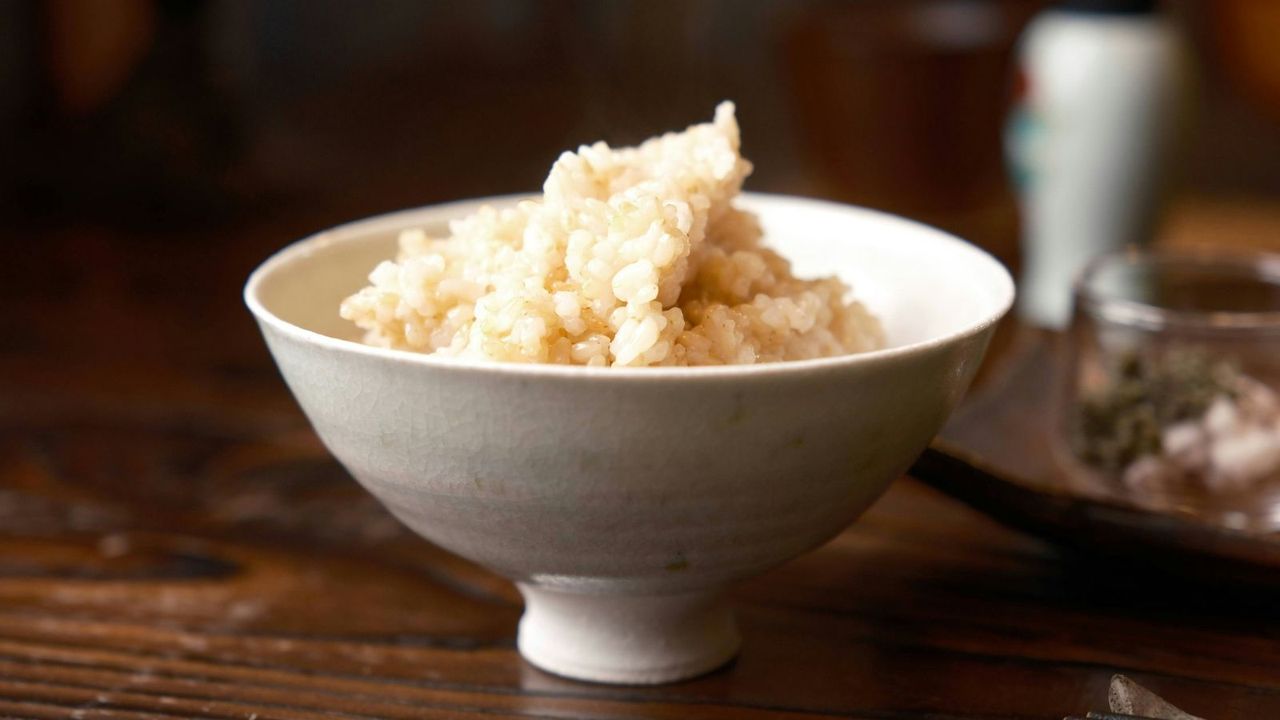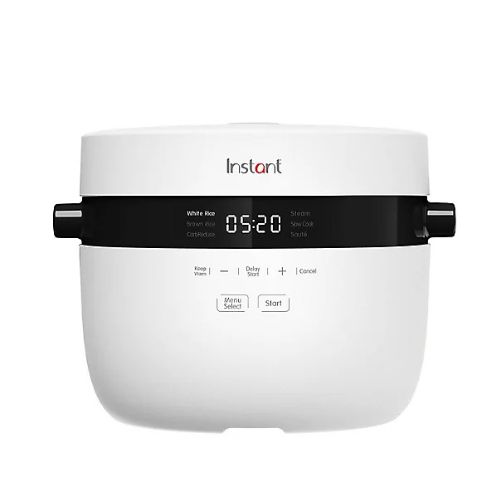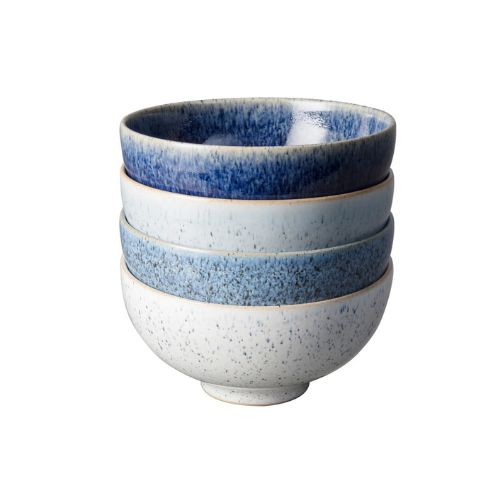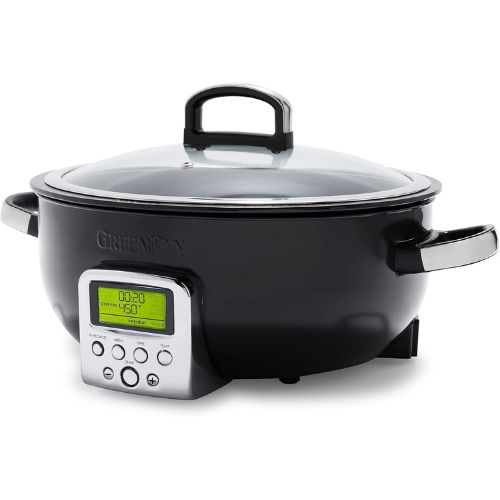
Rice is a real pantry hero: an integral part of any weekly meal rotation, and one of the most versatile food staples I can think of. But often mine turns out a little gloopy, or stuck to the bottom of the pan, so why is it that I can't master how to cook rice for those perfectly fluffy results you get in restaurants?
I'm often wondering if I should rinse rice before cooking it and how to get the best results from my rice cooker as well as how to store cooked rice safely and to enjoy the leftovers for longer (as I always make too much).
So, I've taken to asking the experts, including a sushi chef, to ensure I get it right from here on in. Read on for their advice.
1. How to cook rice on the stove
The standard ratio you’ll need to cook rice on the stove is 1.5 cups of water for every 1 cup of rice. Make sure you rinse your rice a few times in cold water to remove excess starch, and add cold water to the pan before bringing it up to a boil. (This is preferable to starting with boiling water as it allows the grains to absorb the liquid gradually, meaning that the rice cooks more evenly.) Avoid stirring it once it starts to cook – agitating the grains will release even more starch and create a sticky texture.
‘For rice like jasmine or basmati, I use a 1:1.5 rice-to-water ratio,’ confirms sushi chef and food writer Marisa Baggett. ‘Bring it to a boil, reduce the heat to low, and cover. Cook for 15–18 minutes.’
While the process is pretty simple, some long-grain rice dishes require a little more time and care. ‘Cooking rice on the stovetop is an easy process when using short-grain rice, which is much easier and less time-intensive than long-grain rice,’ explains Chef Shamim Popal, Executive Chef of Washington, D.C-based Afghan bistro, Lapis. ‘Afghan-style rice cooking, for example, is very different from other methods.’
2. How to steam rice
Wondering how to steam rice – and how exactly the process differs from cooking it on the stove? I was intrigued to learn that the steaming process actually comes after boiling: once you’ve cooked your rice on the stove, steaming it simply means turning off the heat and letting the rice sit in a covered saucepan – usually for around 10 minutes. This technique is most often used for medium-grain varieties of rice.
‘I typically use a 1:1.2 ratio for medium-grain or sushi rice and cook for 18 minutes on the stove, followed by a 10-minute steam off the heat,’ explains Marisa. ‘When steaming, resist the urge to peek; the trapped steam helps to complete the cooking process.’
The benefits? Steamed rice absorbs water at a more gentle pace (since it’s cooked using water vapor rather than being boiled in the water itself). As a result, the rice tends to have a firmer, fluffier texture.
3. How to cook rice in a rice cooker
‘No matter the variety (jasmine, basmati, or sticky short-grain) my preference is to use a rice cooker,’ says Marisa. ‘It’s one of the most underrated kitchen appliances and produces perfect rice every time with minimal effort. I always tell people to buy a rice cooker; you’d be surprised how often you’ll use it.’
Unsurprisingly, the process is more straightforward than most other methods: simply add in your rice and use the lines on the pot to determine how much water you'll need. (In a rice cooker, the ratio of rice to water is usually 1:1.) All that's left to do after that is cover, cook, and wait.
FAQs
Should you rinse rice before cooking it?
‘Rinsing rice is crucial to getting the flavor right,’ says Chef Shamim. ‘I wash rice in lukewarm water three to four times to remove dirt and excess starch, continuing until the water runs clear. Removing the starch will stop the rice from clumping together.’ Cleaning your rice means that it's less likely to become slimy or mushy, either (although you'll also need to make sure you don't overcook it, of course).
‘Rinsing is important, especially for Japanese short or medium-grain rice,’ agrees Aaron Zahl, founder of Vegan Japanese. ‘Getting rid of the additional starch leads to fluffier, less gummy rice.’
How do you add flavor to rice?
You can add flavor to rice in a number of ways.
‘When boiling the water for rice, you want to make sure it contains salt and a little butter, which enhances the flavor,’ says Chef Shamim. ‘Once the rice has boiled and the water is strained, you can add a pinch or two of crushed cardamom for a bit of warmth and sweetness. We also use cumin to add flavor to rice.’
A little salt will enhance the flavor, too. ‘I often add a pinch of salt a strip of kombu (sea kelp) to the cooking water when preparing short-grain or medium-grain rice,’ says Marisa. ‘Meanwhile, long-grain rice is easily enhanced with vegetable broth substituted for the water. I lean towards subtle flavorings since rice usually accompanies dishes with bold flavors.’
Should you fluff up rice before serving?
It's always a good idea to fluff up your rice before serving. A fork or a rice paddle will do the trick; fluffing up the rice will separate any clumps and guarantee an even texture before you plate up.
How can I prevent rice from sticking to my pan?
To prevent rice from sticking to the bottom of your pan, you'll want to rinse it thoroughly (again, that excess starch is your nemesis here) and make sure to turn off the heat as soon as the water has been absorbed. If the cooking time is up and there's still some water remaining, steaming is your best bet: cover the pot and let it sit off the heat for around 10 minutes. This will help the rice to cook through without burning.
Shop the best rice-cooking essentials

Our experts say that this Instant Pot Rice Cooker isn't just ideal for cooking rice; it can also steam fish and vegetables, and even slow cook small portions. Plus, it's compact enough to stash in your cupboard without taking up too much space.

These durable yet beautiful bowls are perfect for serving rice – and they're suitable for the dishwasher, microwave, oven and freezer.

If you're after a slow cooker that happens to be brilliant at cooking rice, the GreenPan OmniCooker One Pot just might be your best bet. It offers a dedicated pre-set for both brown rice and white rice, and you can even use it to cook cauliflower rice if you prefer.
It always amazes me how a few handy tips really can transform even the most basic ingredients. And it's not just rice: I've just learnt the secret formula for how to cook bacon in the oven, and now I'll never cook it in a frying pan again.







